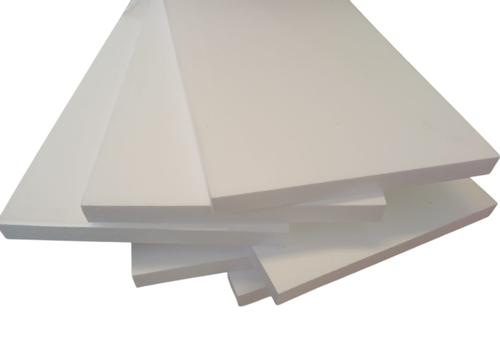"Ultimate Guide: Setting Up Your Electric Panel Heaters Efficiently"

Electric heaters are an excellent choice for maintaining warmth in your home due to their efficiency and ease of use. Designed to provide consistent heat, they are energy-efficient and available in various styles to match your home decor.
Unlike traditional radiators, Electric Panel Heaters are quick to install and require minimal maintenance. They work by converting electrical energy into heat, which is then evenly distributed across the room. These heaters are equipped with modern features such as programmable thermostats, allowing you to customise heating schedules and optimise energy consumption. Additionally, many models include eco-friendly modes and advanced safety features, making them a reliable and sustainable heating option.
Choosing the Right Electric Panel Heater
When selecting an electric panel heater, consider factors such as room size, heater wattage, and energy efficiency rating. The heater's wattage should align with the room's dimensions to ensure sufficient warmth without excessive energy use.
Options include wall-mounted and freestanding models. Wall-mounted heaters save space and can be positioned to maximise heat distribution, while freestanding heaters offer flexibility and can be moved as needed. Pay attention to additional features like programmable thermostats, timers, and eco modes to enhance energy savings. Also, consider the heater's design and finish to ensure it complements your home decor. Safety features such as overheat protection and child locks can provide added peace of mind.
Safety Considerations
When installing electric-panel heaters, it's essential to prioritise safety to prevent accidents and ensure efficient operation. Adhere strictly to the manufacturer's instructions during installation, particularly concerning the mounting and electrical connections. Ensure the heater is positioned away from flammable materials such as curtains, furniture, and bedding.
Regularly inspect the power cord for signs of damage or wear, and avoid using damaged cords. Do not cover the heater or obstruct the airflow, as this can cause overheating. It's also advisable to install smoke detectors in the vicinity of the heater for added safety. For optimal performance, avoid using extension leads as a permanent power source, as they can pose fire hazards. Instead, connect the heater directly to a wall socket. Child locks and overheat protection features can further enhance safety, especially in homes with young children. Regular maintenance checks are also crucial to ensure the heater remains in good working condition.
Installation Process of the Electric Wall Panel Heaters
To install Electric Wall Panel Heaters, gather your tools: a drill, screws, a spirit level, and a screwdriver. Select an interior wall to minimise heat loss. Position the heater's mounting template on the wall and mark the drill holes. Drill into the marked spots and insert wall plugs if needed.
Attach the mounting bracket securely to the wall using screws. Ensure the heater is level when hanging it on the bracket. Follow the manufacturer's instructions to connect the heater to the power source, ensuring all electrical connections are secure and compliant with safety regulations. After installation, test the heater to confirm it operates correctly and safely.
Setting Up Thermostat Controls
Modern electric-panel heaters often come equipped with advanced programmable thermostats. To set up these controls, begin by accessing the thermostat interface, which is usually found on the heater itself or via a remote control. Start by selecting your desired temperature settings for different times of the day. For instance, you might want a higher temperature during the mornings and evenings when you're at home, and a lower temperature during the night or when you're out.
Take advantage of the heater’s programmable schedule feature to automate these temperature changes, ensuring comfort while minimising energy consumption. Many thermostats allow you to set different schedules for weekdays and weekends, catering to your varying routines. Utilise the 'eco' mode if available, as this setting helps maintain an energy-efficient balance between comfort and savings by adjusting the temperature slightly when full heating power isn't necessary.
Familiarise yourself with any additional features your thermostat may offer, such as adaptive start technology, which pre-heats the room to your desired temperature by a set time. This ensures you always walk into a warm space without wasting energy. Ensure you understand how to manually override the programmed settings if an unexpected change in your schedule occurs, allowing for flexibility in your heating management.
Maintenance and Troubleshooting
Routine maintenance is key to ensuring your electric panel heater operates efficiently. Start by turning off and unplugging the heater before cleaning. Use a soft, dry cloth to dust the exterior and vents, avoiding any abrasive cleaners or water, as moisture can damage electrical components. Regularly inspect the heater for visible signs of wear or damage, such as frayed cords or loose connections, and address any issues promptly.
If your heater isn't turning on, verify that it's securely plugged into the power source and that the circuit breaker hasn't tripped. Check the thermostat settings to ensure they are correctly programmed, and the temperature is set above the current room temperature. If the heater is on but not producing heat, it might be in 'eco' mode or on a low setting; adjusting these can often resolve the issue.
Uneven heating can sometimes occur if the heater's airflow is obstructed. Ensure the heater is free from obstructions and that the vents are clear. If the problem persists, a reset might be necessary; consult the user manual for specific instructions on resetting your model.
For more complex issues, such as electrical faults or persistent operational problems, it’s advisable to seek professional assistance. Avoid attempting to repair internal components yourself, as this can void warranties and pose safety risks. Regular maintenance checks and prompt troubleshooting can extend the lifespan and efficiency of your electric panel heater.
Cost Efficiency and Energy Saving Tips
Electric-panel heaters can be a cost-effective heating solution when used correctly. To enhance their efficiency, start by ensuring that your home is well-insulated. Sealing gaps around doors and windows prevents heat from escaping, thereby reducing the workload on your heater. Utilising heavy curtains or thermal blinds can also help retain heat during colder months.
Additionally, setting your heater’s thermostat to a moderate temperature can result in significant energy savings. Avoid setting the temperature too high; a comfortable room temperature of around 18-21°C is generally sufficient for most living spaces. Take advantage of the programmable thermostat feature to lower the temperature when you are asleep or away from home, further minimising energy use.
Using eco modes and other energy-saving settings on your heater can also contribute to cost efficiency. These features are designed to maintain comfort while reducing power consumption. Placing the heater in a central location ensures even heat distribution, reducing the need for multiple units.
Lastly, regular maintenance, such as dusting the vents and ensuring unobstructed airflow, helps maintain optimal performance and energy efficiency. Small steps like these can lead to considerable long-term savings on your energy bills.
Conclusion
Electric panel heaters combine modern technology with user-friendly features, making them an excellent choice for maintaining a comfortable home environment. From selecting the right model to ensuring safe installation and optimal use, the steps outlined in this guide provide a comprehensive roadmap for homeowners. By integrating advanced programmable thermostats and eco-friendly modes, you can enjoy efficient heating that suits your lifestyle. Additionally, taking proactive steps like regular maintenance and strategic thermostat settings can enhance performance and energy savings. As you plan your home heating setup, consider your specific needs, room dimensions, and desired features to select the most suitable electric panel heater. Remember, the key to maximising the benefits of your heater lies in careful selection, proper installation, and ongoing maintenance.
FAQs
What tools do I need to install an electric panel heater?
You'll need basic tools like a screwdriver, drill, wall plugs, screws, a spirit level, and possibly a tape measure. Ensure you have a compatible power outlet nearby.
How do I ensure proper ventilation for my panel heater?
Make sure there is enough space around the heater to allow air to circulate freely. Avoid placing it behind doors or against walls that could block airflow. Keep objects at least 1 meter away from the heater.
Can I install the Electric Panel Heaters on any wall?
It's best to install the heater on an interior wall, away from external doors and windows. Ensure the wall is strong enough to support the weight of the heater and that it's securely fixed.
How do I set up a heating schedule for my electric panel heater?
Many modern panel heaters come with programmable timers or remote controls. Refer to the user manual for specific instructions on setting up a heating schedule that suits your needs.
What safety precautions should I take when installing an electric panel heater?
Always follow the manufacturer's instructions. Ensure the heater is properly grounded and that the electrical circuit can handle the heater's load. Keep the heater away from flammable materials, and never leave it unattended while in use.
How do I maintain my electric panel heater?
Regularly clean the heater by vacuuming the air vents and grilles to remove dust and debris. Check the heater for any signs of wear or damage and ensure it's kept dry and free from moisture.
|
Related Business Listings |






